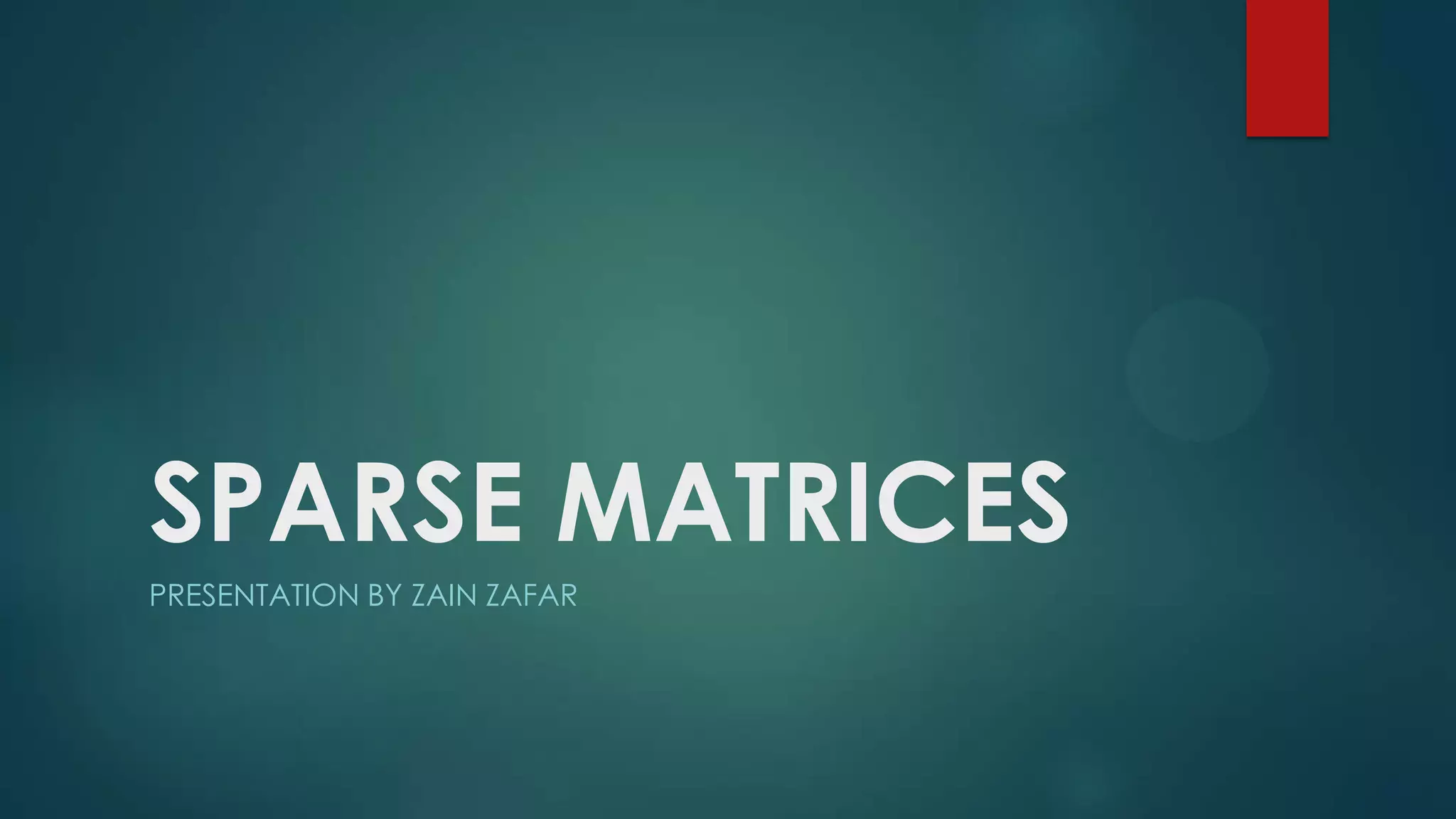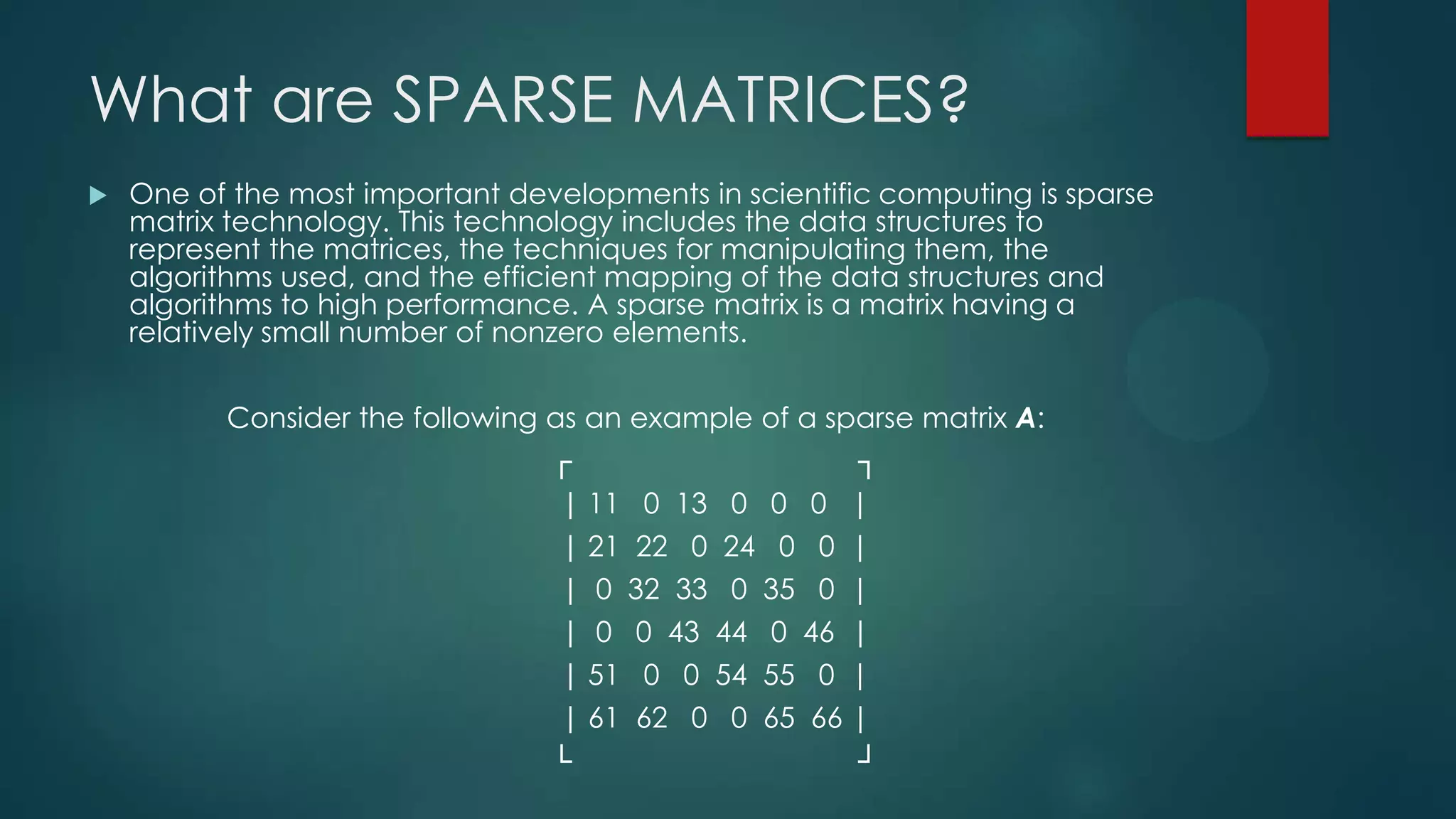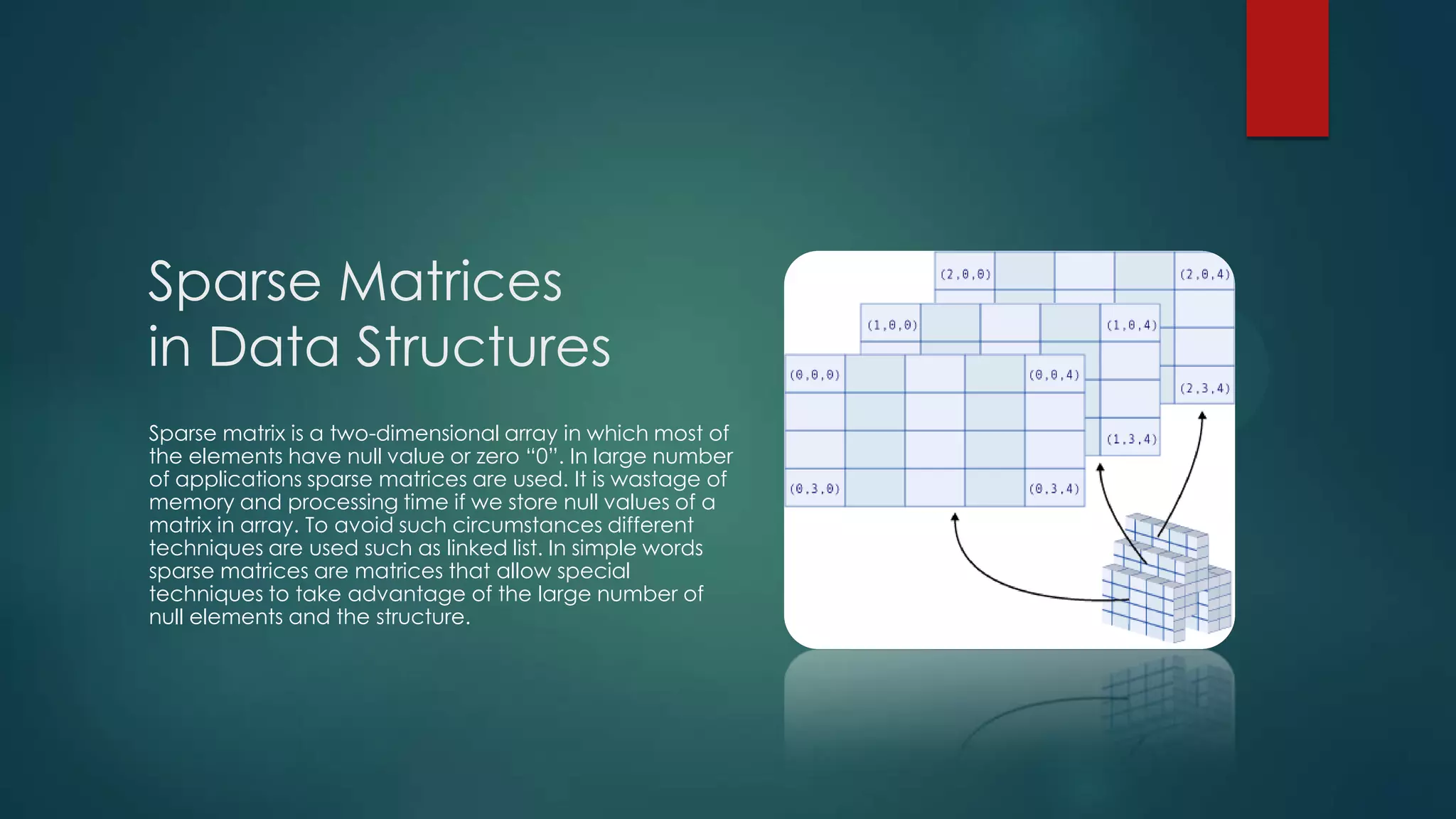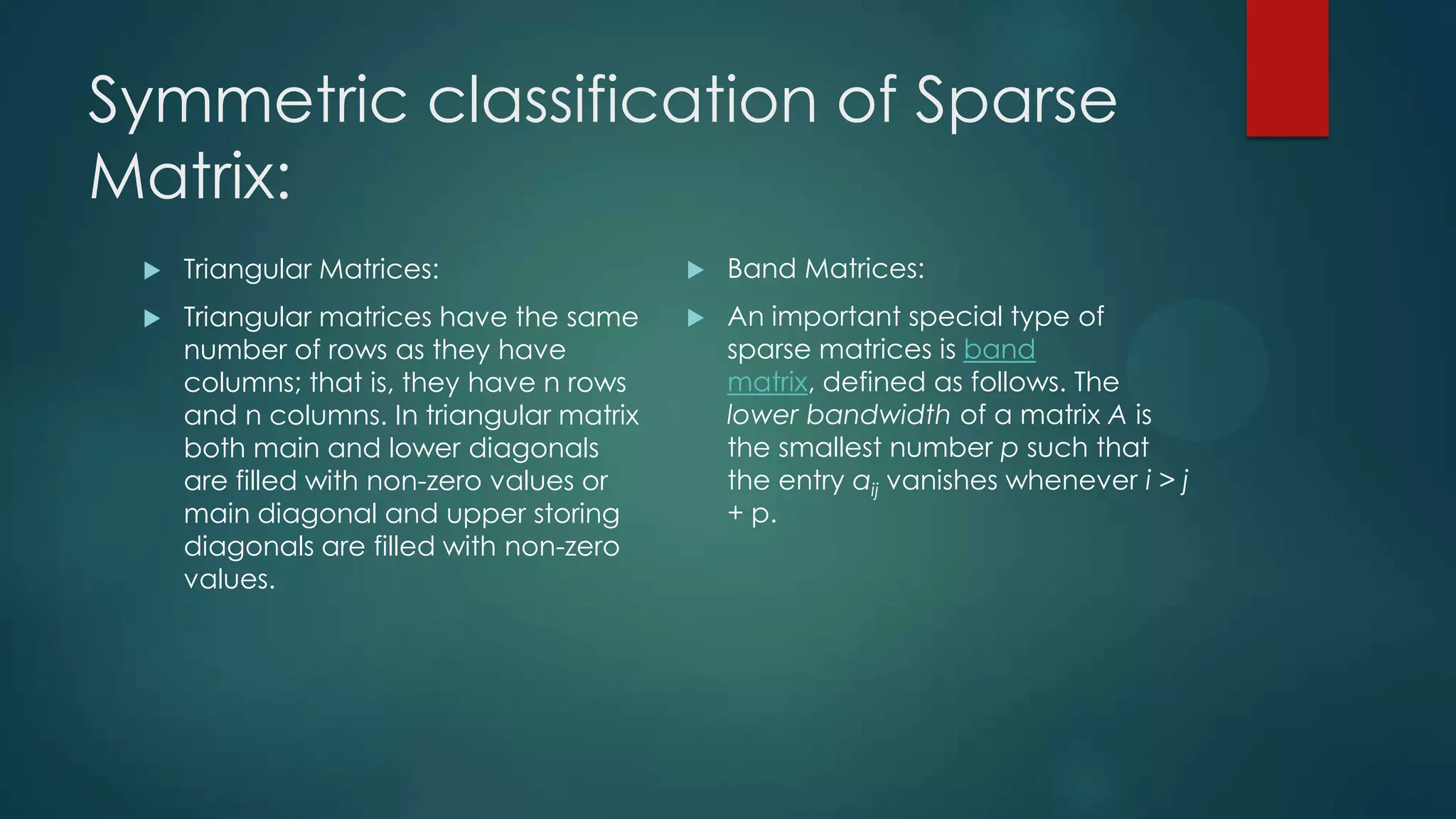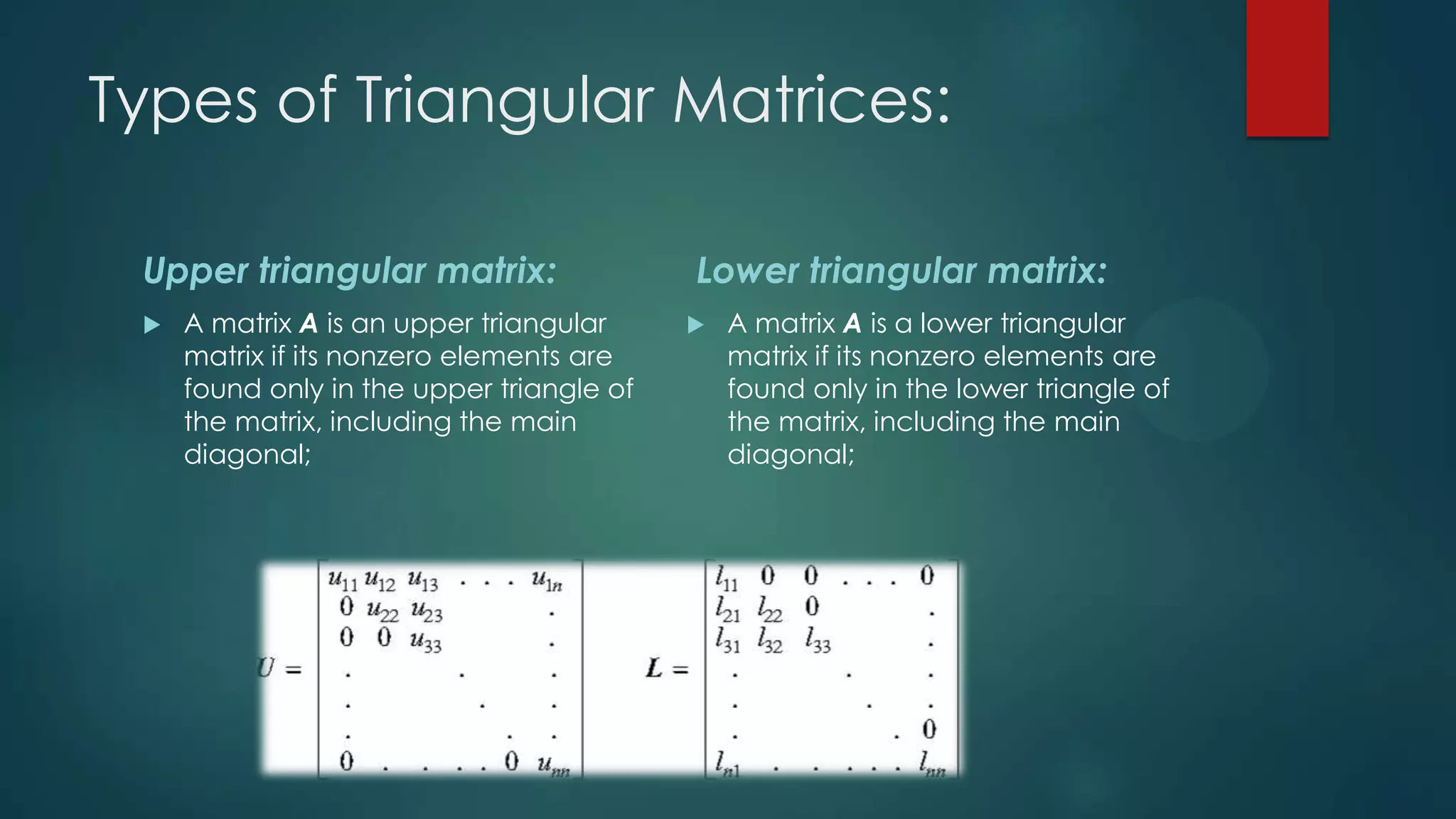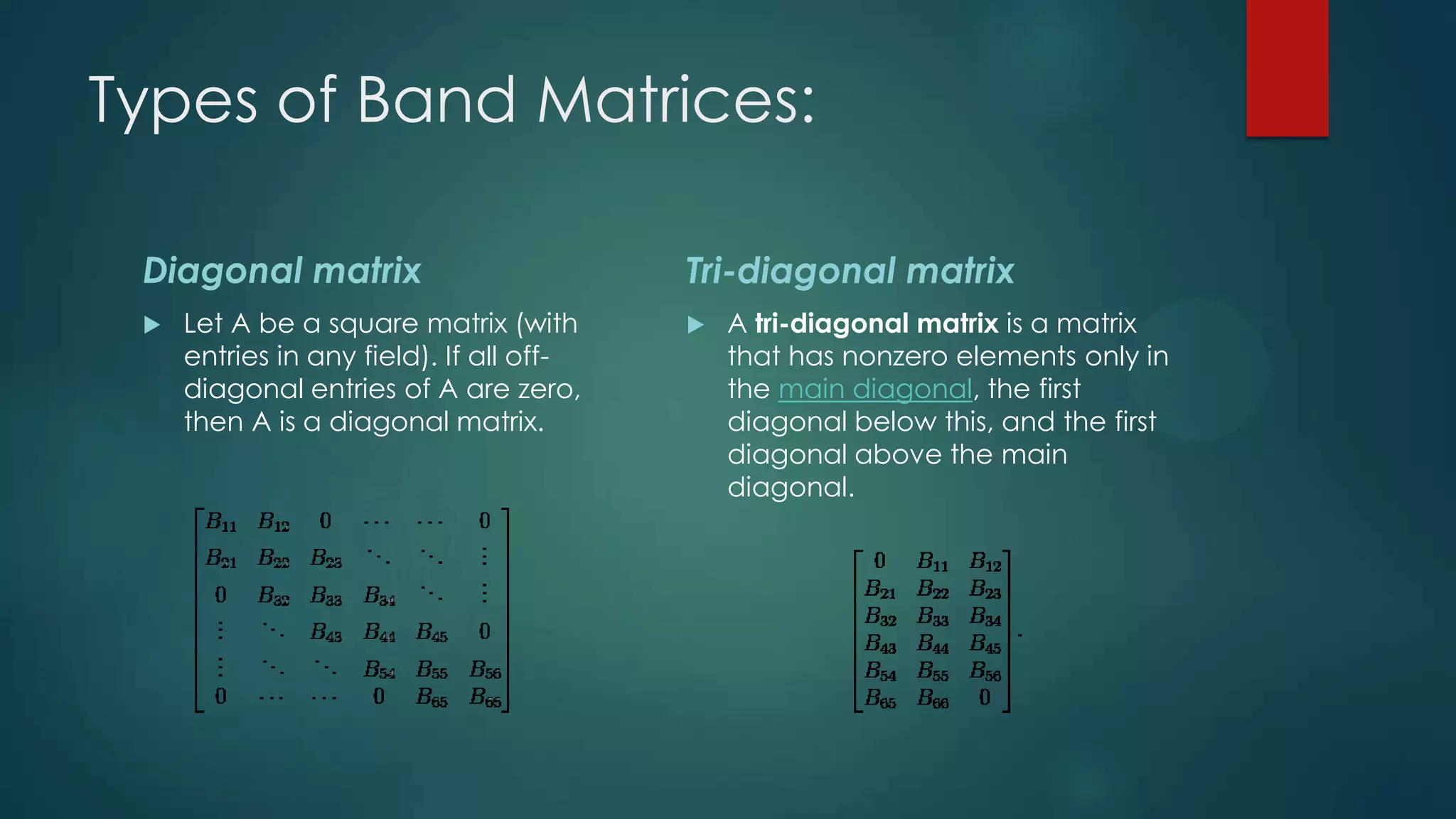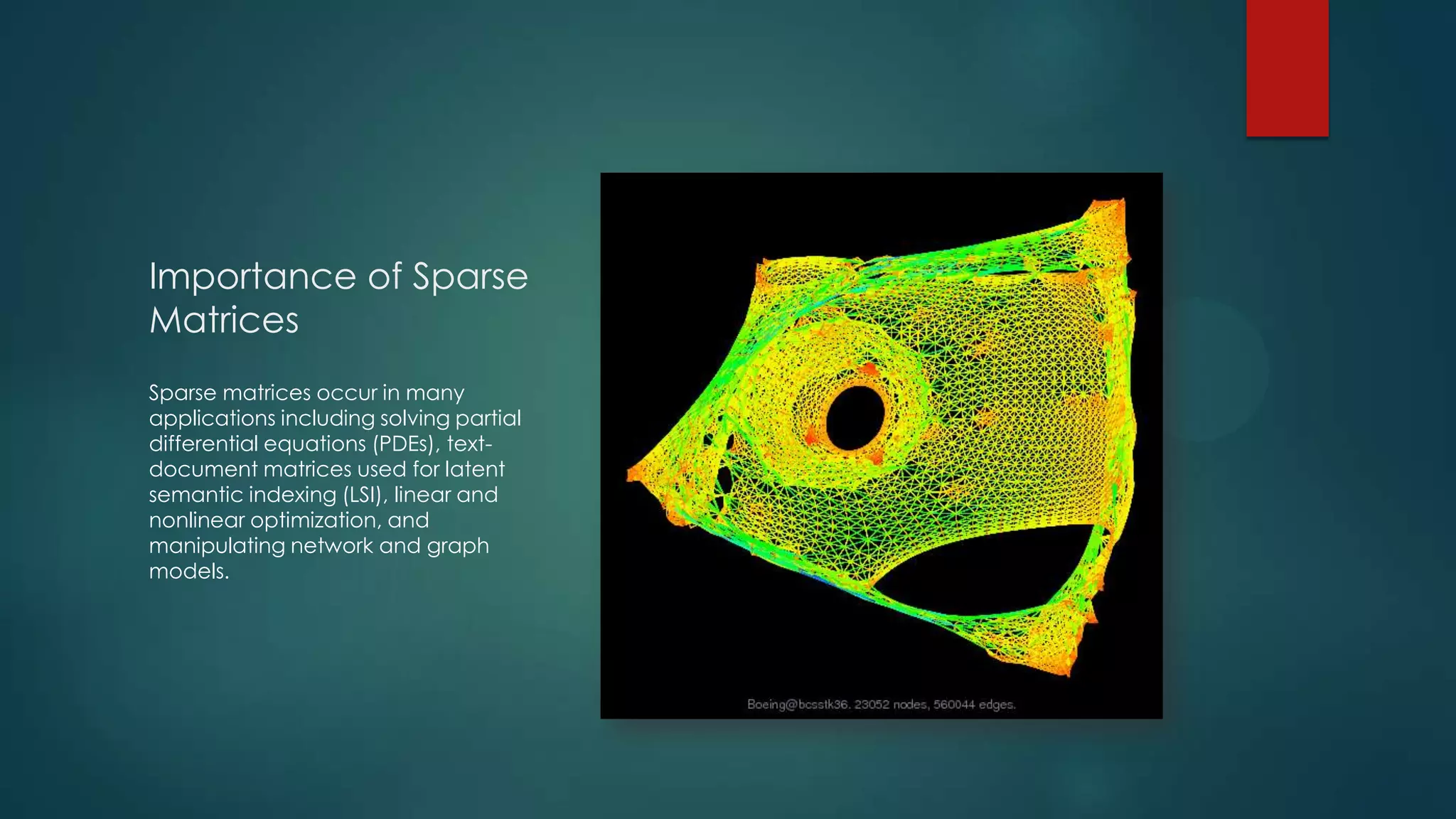Sparse matrices are matrices that have relatively few nonzero elements, allowing for specialized storage techniques. They occur often in applications involving partial differential equations, text analysis, optimization, and network modeling. A sparse matrix example is presented with nonzero elements only in certain locations. Key sparse matrix types include triangular, banded, diagonal, and tridiagonal matrices.
